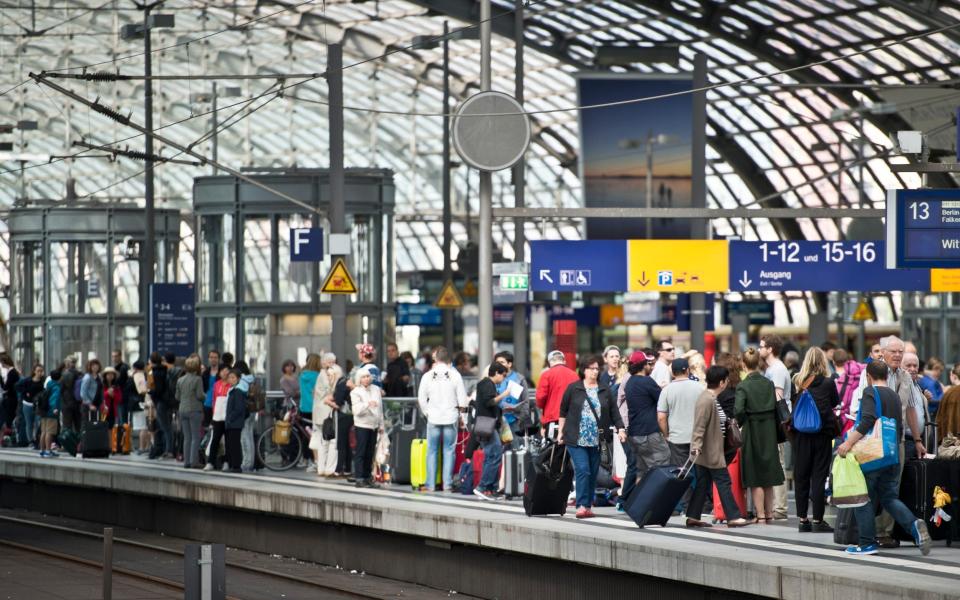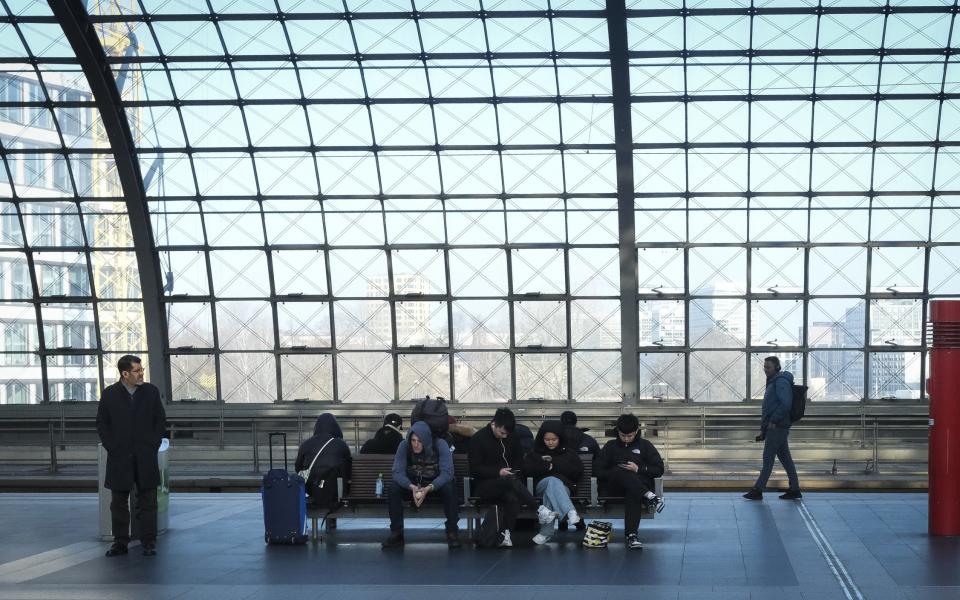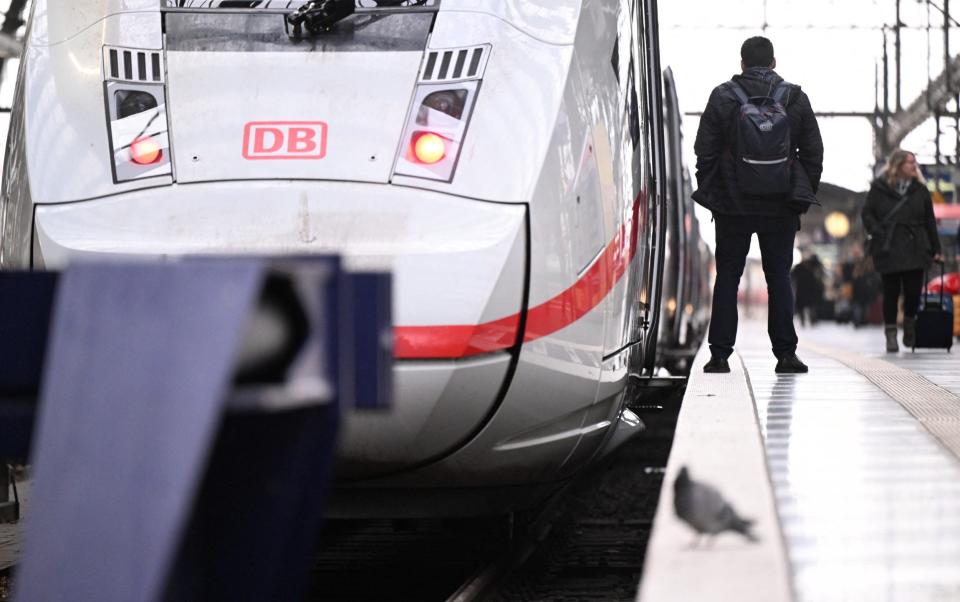It’s been a bad few weeks for the German rail network. Striking drivers brought much of the system to a standstill last Thursday and Friday, and they promise more are to come. Meanwhile, a Washington-based research firm, the Consumer Choice Center, has placed Bremen’s Hauptbahnhof in a solid last position among the 50 European stations in its annual Railway Station Index. It showed that more than “43 percent of trains were delayed,” there were “only nine shops” and “no access to free Wi-Fi.”
Germans will not be surprised by the bad publicity. They probably have a (very long) word for showcasing their national rail network, because it’s become something of a national pastime. And the statistics certainly don’t look good for a country with a reputation for efficiency. Long-distance train punctuality has fallen to 73 percent, compared to a UK performance rating of 79 percent. But Deutsche Bahn says around 75 percent of those delays are due to the trains passing at least one construction site, as a result of their massive investment and renovation programme.
Personally, I have little to complain about based on recent experiences. I just returned from a trip from Berlin to the Baltic Sea, to Dresden and back to Berlin. Two of these journeys involved three trains, with connections lasting 10 to 15 minutes each. Everything worked fine. Each train was comfortable, there was plenty of room and there was a power socket next to my seat to keep all my devices in order. And if you look closer at that European Railway Station Index, Zurich is at the top (ah, those Swiss trains!), but there are also two German hubs, Berlin and Frankfurt, in the top ten.


Meanwhile, the network is adding new departures, so some of this is growing pains. Hamburg to Copenhagen and Berlin to Paris are recent introductions of sleeper vehicles, and later this month the European Sleeper, the most convenient sleeper for British travelers that has yet connected Brussels to Berlin, will extend its service to Dresden and ultimately Prague. Along the way, a stop is made in the heart of Saxon Switzerland, a mountainous forest area on the banks of the Elbe, very popular with hikers and artists (including Caspar David Friedrich, who will celebrate a major anniversary in 2024). I traveled on that train in January, and although the carriages are frankly shoddy – late 1970s Eastern Europe – the eleven-hour journey arrived in Berlin right on time.
During my many years of traveling by German train, I can only remember two times when my travels went a bit in die Hose (literally ‘in the pants’, also known as pear-shaped). One was on an international train from Amsterdam to Cologne, which had to change locomotives once across the border. The Dutch locomotive uncoupled and drove away, looking smug, but its German equivalent did not have the grace to look slightly embarrassed when it finally arrived, 45 minutes late.
The other occasion was when Deutsche Bahn first introduced the €49 per month value pass in 2022, an idea that has proven so popular that it has since been partly adopted by Spain and will be introduced in France this year.


I was on the train from Hamburg on a summer Friday afternoon heading to Rostock and the coast, and I was not the only one, far from it. In fact, the crowd was so large that the conductor lost her cool and called the police. They repeatedly called on people to get off, but no one gave in – no one did anything illegal – and the train finally left fully loaded. It was somewhat entertaining to see how bewildered German railway officials could become when confronted with the kind of overcrowding that occurs quite regularly on British trains.
Part of the problem facing the German network is its sheer size. It has 32,753 miles of railway lines, double the 10,072 in Britain, and carries a lot of freight as well as passengers. For many rural areas it runs like a local bus and stops at almost every lamppost. For international travelers, this means that they must pay close attention to train indications. The ICEs (Inter City Express), ICs and EuroCity trains cost a bit more, and do what they promise. At the other end of the scale are the RB (RegionalBahn, stops everywhere) and RE (RegionalExpress, faster, with fewer stops).


Many of the faster trains offer WiFi, as do the stations, which makes me think Bremen must have caught the inspector on a bad day. I have often sat in a station bakery/coffee shop with my laptop fully connected. Station bakeries are ubiquitous, with irresistibly crispy käsestange bread smothered in bacon and melted cheese, but so are other forms of dining options. Hamburg has no fewer than 24 points of sale, from sushi and vegan to Indian. Which British channel can match that?
Architecturally, some of these buildings are among the great railway cathedrals of Europe. The main hall features Cologne’s gigantic, curved glass roof, something out of Kew Gardens, but ten times bigger. The roof of Frankfurt also has beautiful curves. And then there are the new ones, especially the Berlin Hauptbahnhof, built like a cake, an enchanting open spaghetti junction of railways arriving from different angles at different levels.
Some of the lesser-known stations are undiscovered gems: I love Görlitz, in the furthest southeastern corner against the Polish border, with its art nouveau interiors and echoing emptiness. And Leipzig, also Art Nouveau, with its enormous arches and light sandstone facade earned it the title of the third best train station in Europe in 2020. Back then, just four years ago, there were no fewer than five of the top ten stations in the world. -the same Consumer Choice Center survey was German.
I dare say that Deutsche Bahn has bigger concerns right now than the Washington-based investigations, especially if these strikes continue. But if it wants to restore the Freundschaftsbezeugung (friendly relationship) it would like to have with its customers, some shake-up is clearly needed.